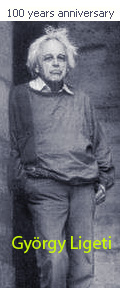

Art sense Polymorphism in Art Rasas and Islamic Aesthetics Play and Symbolism Abstraction and Surreaslism |
Humanism Helen Keller Ideals The symbol Che Four Signs for All Times |
Schemata Instructions On How To Put On A Shirt |
Obsessions A rare and strage being El poder es más fuerte War |
Enigms Draculae The Diabolical Tritone Murder The sky |
Biophere Usableness A harsh economy Epigenetic |
Rasas and Islamic Aesthetics
Aesthetics is the science that deals with nature of art. In other
cultures, such as in India, there are the rasas. According to the
Encyclopedia Britannica rasa is translated as an Indian aesthetic
theory. These are elements of a work of art that can only be
suggested, but not described. The art induces in the observer rasas,
producing intrinsic mental states. For example, the Sringara Rasa
is related to love, beauty and devotion.
The theory about rasas was developed by Bharata in the second millennium before the Christian era, therefore predates most Western approaches to art. The question is: What is the emotional content of a work of art? Kathleen Marie Higgins in her paper "An Alchemy of Emotion: Rasa and Aesthetic Breakthroughs" published in "Global Theories of the Arts and Aesthetics" (2007), tests how the aesthetic theory of the rasas relates to Western art. As well as this, neuroscientists Ramachandran and Hirstein, in their article "The Science of Art", published in the "Journal of Conscientiousness Studies" (June/July 1999), note that modern painting, especially that of Picasso, tends to a distortion or an exaggeration of the proportions of human figures, which at the time was considered a "profoundly new discovery", although in India and Africa, the style had already been in practice for several centuries as the aesthetic theory of the rasas had already existed, at least in India. Dr. Jale Nejdet Erzen, a theorist at the University of Ankara, Turkey, discusses the possibility of an Islamic aesthetics. To do this, it must be borne in mind that for centuries, Islamic art had no critical counterpart or a theoretical base, on the contrary, the arts were by themselves recursive, but also at the same time traditional, so variations of the art tried to maintain the traditions, which implies a vital contradiction that goes against a search for new forms, as has happened in the West. Meanwhile, Shereen El Feke, correspondent for The Economist and the Al Jazeera network, in a lecture at the TED, called "Pop culture in the Arab World", showed Islamic culture crossing over to the West. As an example, she showed a blond and skinny Barbie doll, wearing a bikini and Fulla, the Arabic version of Barbie, dressed in black hijab. She also showed "Islamic superheroes", creator of the Kuwaiti psychologist Nayef Al Mutada pursuing Allah's attributes of justice, wisdom, mercy and others (there are 99 of them). One of these superheroes is Noora, a beautiful girl who has the power to see into people yet having the typical arrogant attitude and pride of Western superheroes. 
Heroin Noora and Fulla doll
Islamic art is rich in repetitive and orderly images and Gombrich describes something similar in his book
"The Sense of Order" Dr. Erzen explains that Sufi teachings "deny that definitions of truths about the
world and human relationships to it can be captured in language".
Time and space are basic symbolic aspects of Islamic culture.
This is a constant in the behaviour of the human species. The passage of time and its implications are of
vital importance, as are the contemplation of hypothetical scenarios of future situations.
According to Islam, the world is seen from a point of view that shows it constantly changing and in
movement. Dr. Erzen finds here the crux of the matter for the artist, saying that "Because the world is
accepted as constantly changing, freedom of expression is not an important issue for art or for the
artist".
In short, Islamic art can no longer continue to centre on its expressive traditions while at the same
time being part of a globalised world.
|
||
© Jaime A. Maldonado
All right reserved
|
||


![]()
All right reserved - 2015